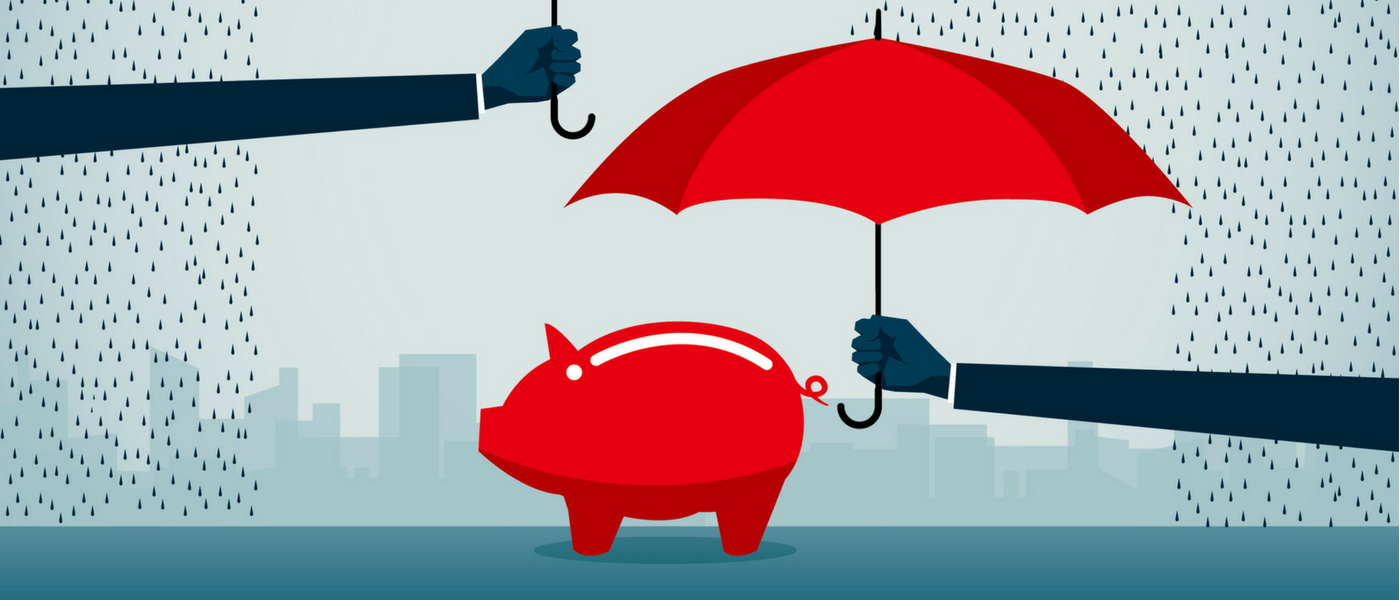Only 40% of Americans are able to cover an unexpected $1,000 expense. This means that most Americans are in fact living paycheck-to-paycheck. A small car accident or an unexpected health issue would render most helpless and in debt. However, in America, a land of excess and consumerism, many choose not to emphasize saving. It is easy to fall into the habit of overspending, racking up credit card fees, and requiring personal loans. Thus, it is important to know how to save properly, designating some portions of disposable income into savings. In this article, I will be talking specifically about two important savings funds: the rainy day fund and the emergency fund.
Rainy Day Funds
A rainy day fund is a small fund of a few hundred dollars, but the amount depends on your lifestyle. The goal of this fund is to be able to afford small irregularities in your spending, arising from unexpected expenses. These expenses are smaller in scale than those that the emergency fund would cover, such as small home repairs. It is important to always know that you have the ability to afford a significant expense.
Emergency Funds
An emergency fund is a pool of money that is saved up from part of your regular income. The goal of this fund, rather than traditional savings or retirement accounts, is to minimize the effects of an emergency, especially a financially-taxing one. According to Vanguard, an emergency fund should have “at least 3 to 6 months’ worth of expenses.” You should be able to continue your lifestyle for 3 to 6 months through using the emergency fund.
The 3 to 6-month time frame is generally agreed upon by experts to be long enough to resume a normal life, perhaps finding a new income source. Dave Ramsey explains that people that have jobs with “very low layoff ratios” or people with multiple income streams may need to save for only three months, whereas a person with just a single income source may need to save for six months. The emergency fund should be tailored to your circumstances.
Storing Your Funds
There are many places where you can store your rainy day fund and emergency fund. The most common method is putting the funds in a high yield savings account that likely pays around 2% annually. You will likely also have a checking account with that same bank, so you can easily transfer the money from the savings account to the checking account to pay for unexpected expenses.
The funds must be in liquid assets. This means that you must be able to quickly access your money in an emergency. There is no point in investing your funds in real estate, for example, or buying a car. This money should be put away and not touched until you truly have an emergency. The funds should be in savings accounts, money market accounts, or other easily accessible accounts.
Accumulating Emergency Funds
It’s difficult to save an entire fund from one paycheck; there are other expenses that must be covered. In addition, you are likely saving for retirement. Thus, accumulating these funds is a slow but methodical process. There should be a designated amount for each fund set aside from your disposable income each month. This mostly applies to the emergency fund, as the rainy day fund is much smaller in size than the emergency fund. In addition, both funds should be actively monitored to ensure that it is accurately reflecting your lifestyle and fiscal situation.
Conclusion
Simply because other Americans are not utilizing the practice of safety net funds does not mean you shouldn’t either. Both rainy day and emergency funds are integral parts of financial security. A key aspect of financial wellness is having a solid safety net that can catch you anytime you run into problems. In an emergency, you cannot rely on family or friends to help you out, so it is important to have your own funds set aside. For most Americans, one small change in their finances could mean financial ruin. Do not let one incident ruin your financial situation by taking the necessary precautions and contributing to both a rainy day and an emergency fund.







